
The Kouros of Apollonas
In an ancient quarry near the village Apóllonas in the north of Naxos lies a large, unfinished marble statue, the Kouros. On the whole hill many traces of the marble quarrying are still visible today, and another smaller statue lies inaccessibly in the scrub under the road.
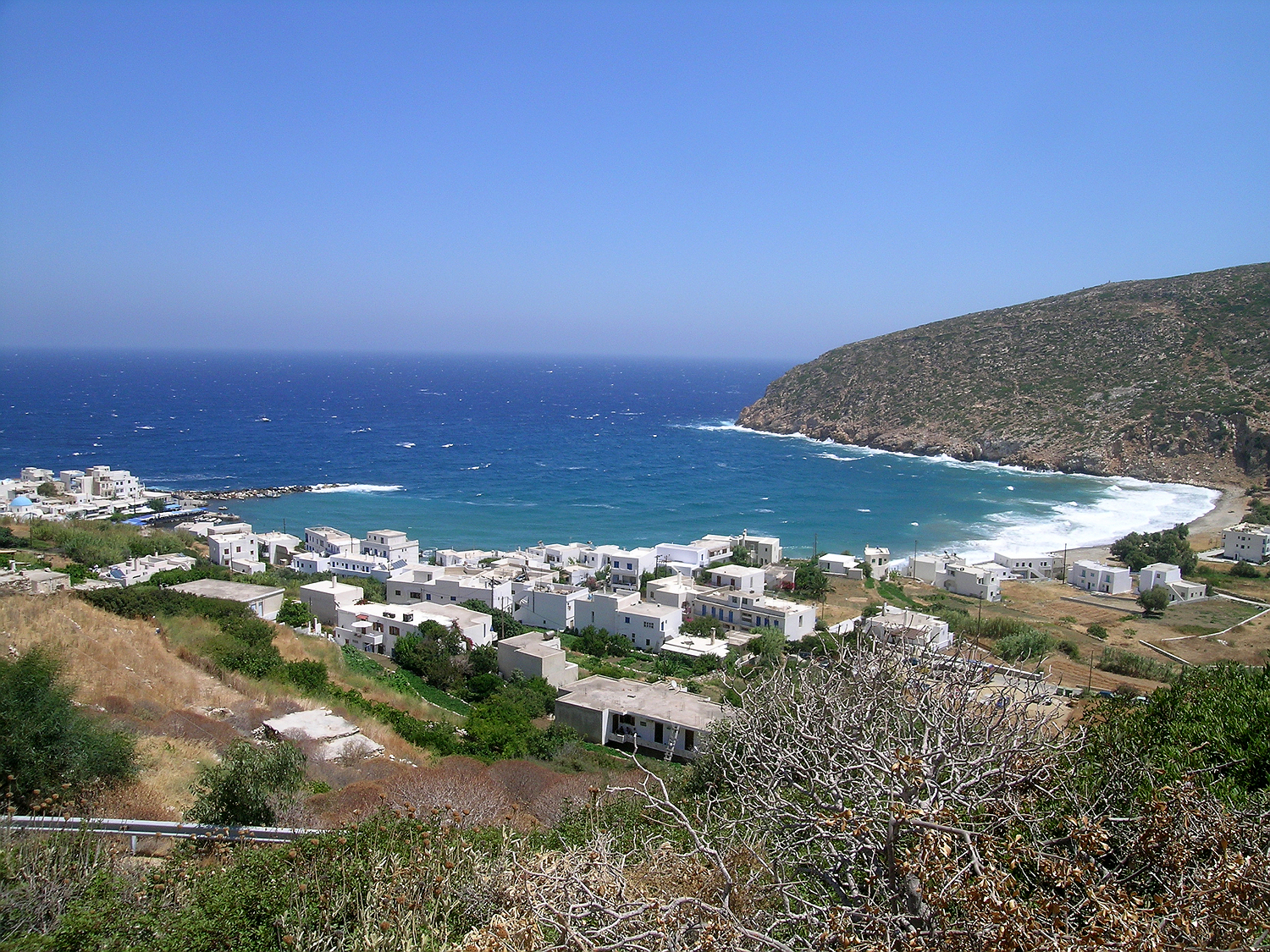
view from the Kouros to the village of Apollonas
The ancient quarry in which the Kouros lies is one of the most important marble quarries of the early Archaic period, not only on Naxos, but also in the wider area. It was in use probably from the Mycenaean time to the Classical epoch and it might well be the oldest marble quarry in Greece. Marble blocks and statues from the quarry of Apóllonas are not only found on Naxos, but also on Delos, in the Acropolis and even in Delphi.
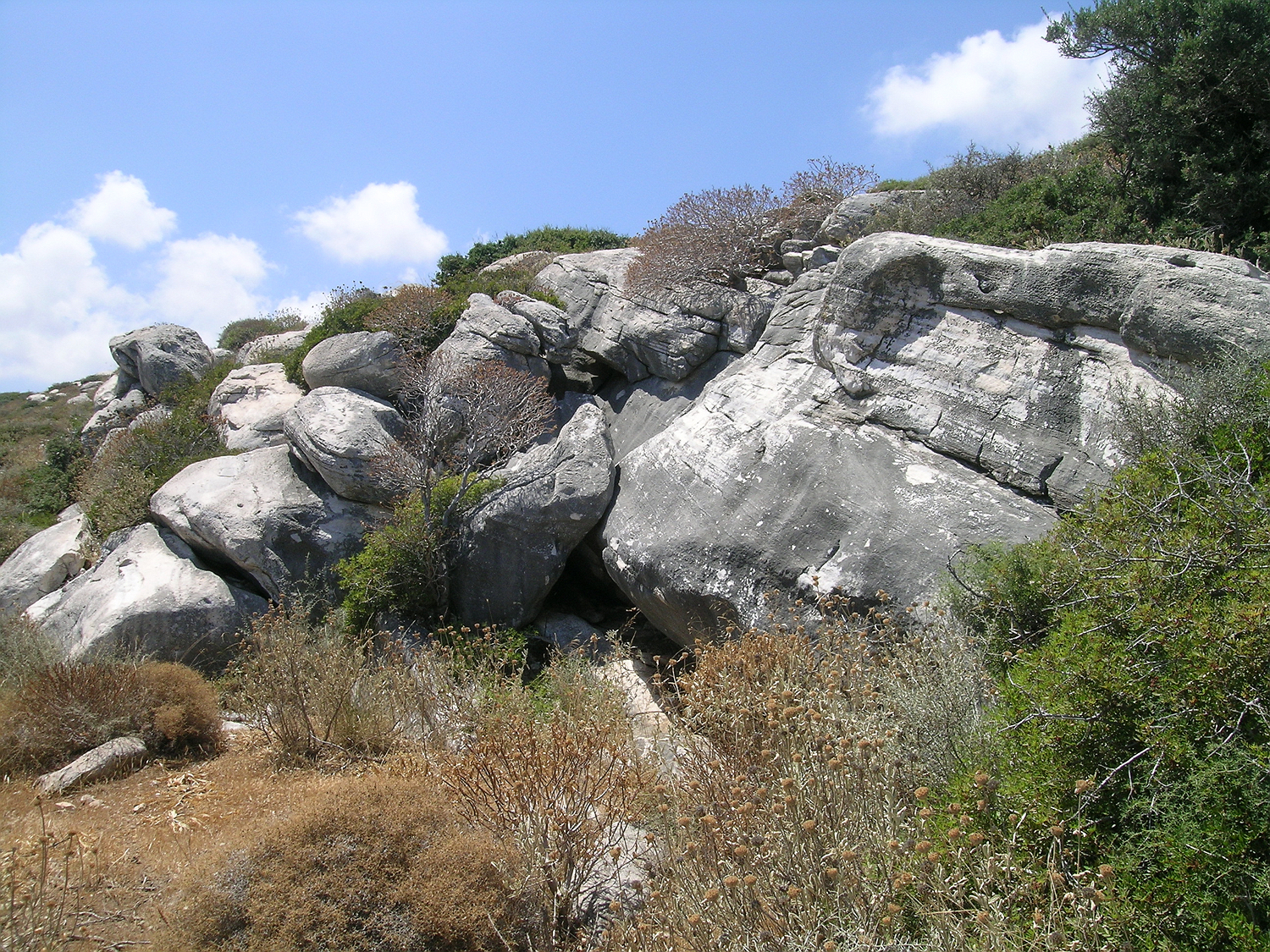
All over the hill lie outcroppings of good white marble, some of which still show traces of processing.

Directly by the road lies this marble rock, from which a large block was being cut; a deep notch has been made at both ends.
The Kouros is an exceptionally large statue: it is over 10 metres long and (allegedly) weighs around 80 tonnes, making it slightly larger than the Colossus of Delos, also from Naxos, which depicts Apollo and is the largest marble statue ever erected in Greece. The figure is lying on its back and is only roughly carved with the head, legs and arms are clearly recognisable but not refined. The as yet unfinished feet stand on a 50 cm high plinth (= marble slab). All kouroi were not finished in the quarry but only at their final location to minimise damage during transport. It is very likely that the statue was intended to represent the wine god Dionysus, the most important god of the island (recognisable by his beard).
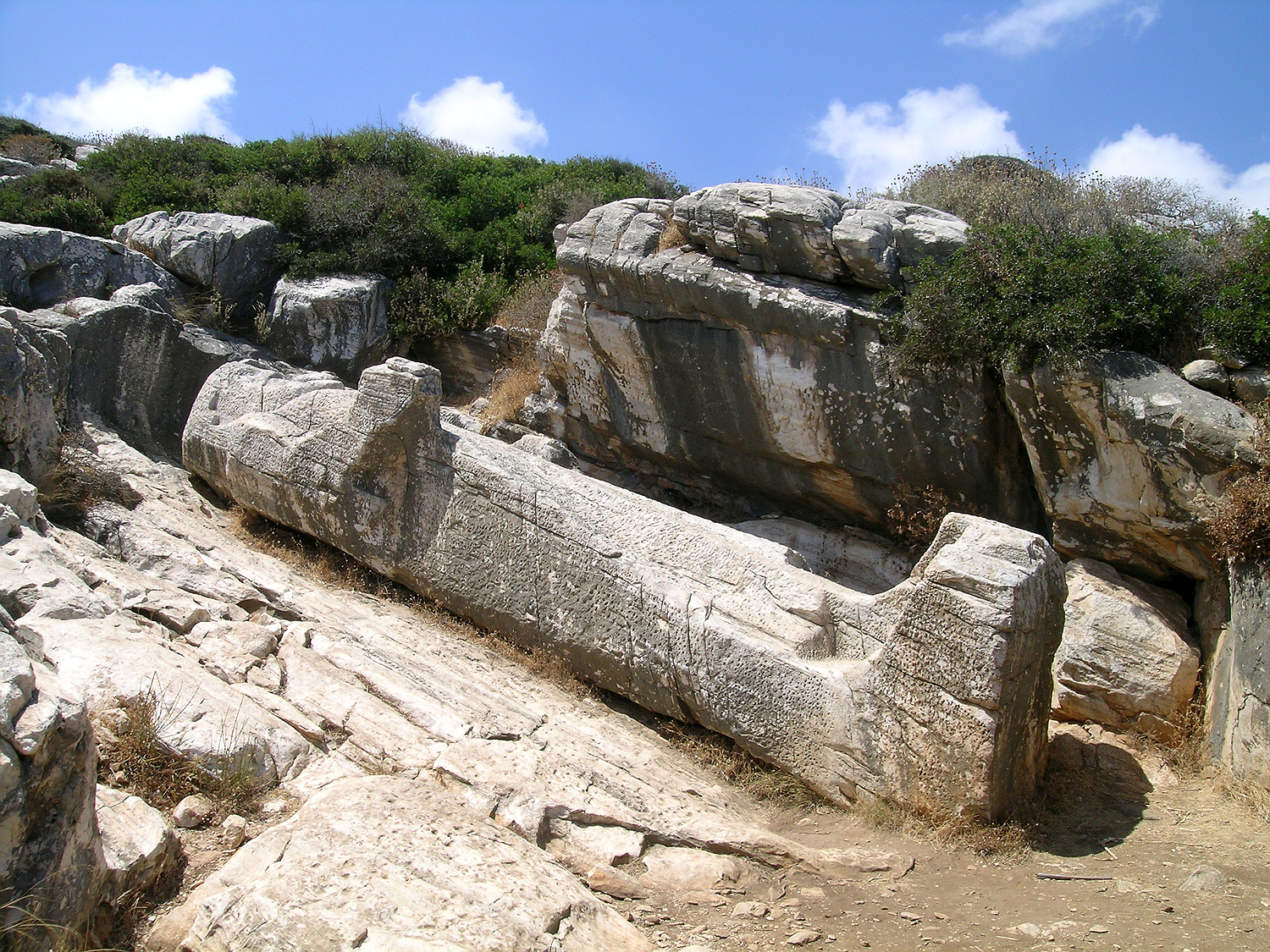

The Kouros is dated to the early 6th century BC in the Archaic epoch. The statue has already been detached from the ground and moved a few decimetres. The attachment point for a lifting beam can be seen under the back at the centre of gravity. However, no track has been uncovered for the removal of the statue, i.e. the statue was abandoned before transport began. We do not know why the statue was not removed. Perhaps the transport presented the stonemasons with an insurmountable task – the Colossus of Delos, which was almost as large at around the same time, was transported from the quarry at Flerió to Delos, but it is calculated to have weighed considerably less (around 30 tonnes). It is also conceivable that political changes led to the statue being abandoned.
The naxiotic technique of marble sculpturing
The Kouros of Apóllonas is one of the first monumental statues in Greece. For more than fifty years, such larger than life statues were made of all Greece only on Naxos: The island played a very important role in the development of Greek marble sculpturing. From Naxos numerous statues were exported to other parts of Greece. Also, the technique of marble processing spread from here: Not only statues of Naxian marble are found in many parts of Greece, but also statues of local marble in naxian style.
The art of marble processing and the making of statues has a particularly long tradition on Naxos. In the early Bronze age, in the third millennium BC, Naxos was an important center for the production of the famous Cycladic idols, small, abstracted, carefully crafted marble statuettes. The fact that Naxos was a pioneer in the development of marble sculpturing is not only related to the good marble of the island, but also the emery which is unique to the island. We know that the emery was used during the Bronze Age for the processing of marble: The early sculptors used for example emery powder to hollow out and smoothen their work.
The Naxian marble sculpturing is based on the Egyptian techniques of sculpturing, as can be seen with the Kouros of Apóllonas. Many features of the statue coincide with those of Egyptian statues, such as the proportions, the leg position (left leg a bit forward), the arm posture (to the elbow close to the body, then angled), the head posture (face exactly forward) and the hairstyle (resembles the typical Egyptian style). Almost all the early Greek figures are designed in this way, while the later figures abandon the strict posture and become “mobile” (for example, the Kouros in Mélanes, which retains some aspects of the early “Egyptian” posture, but stands in a more casual way).
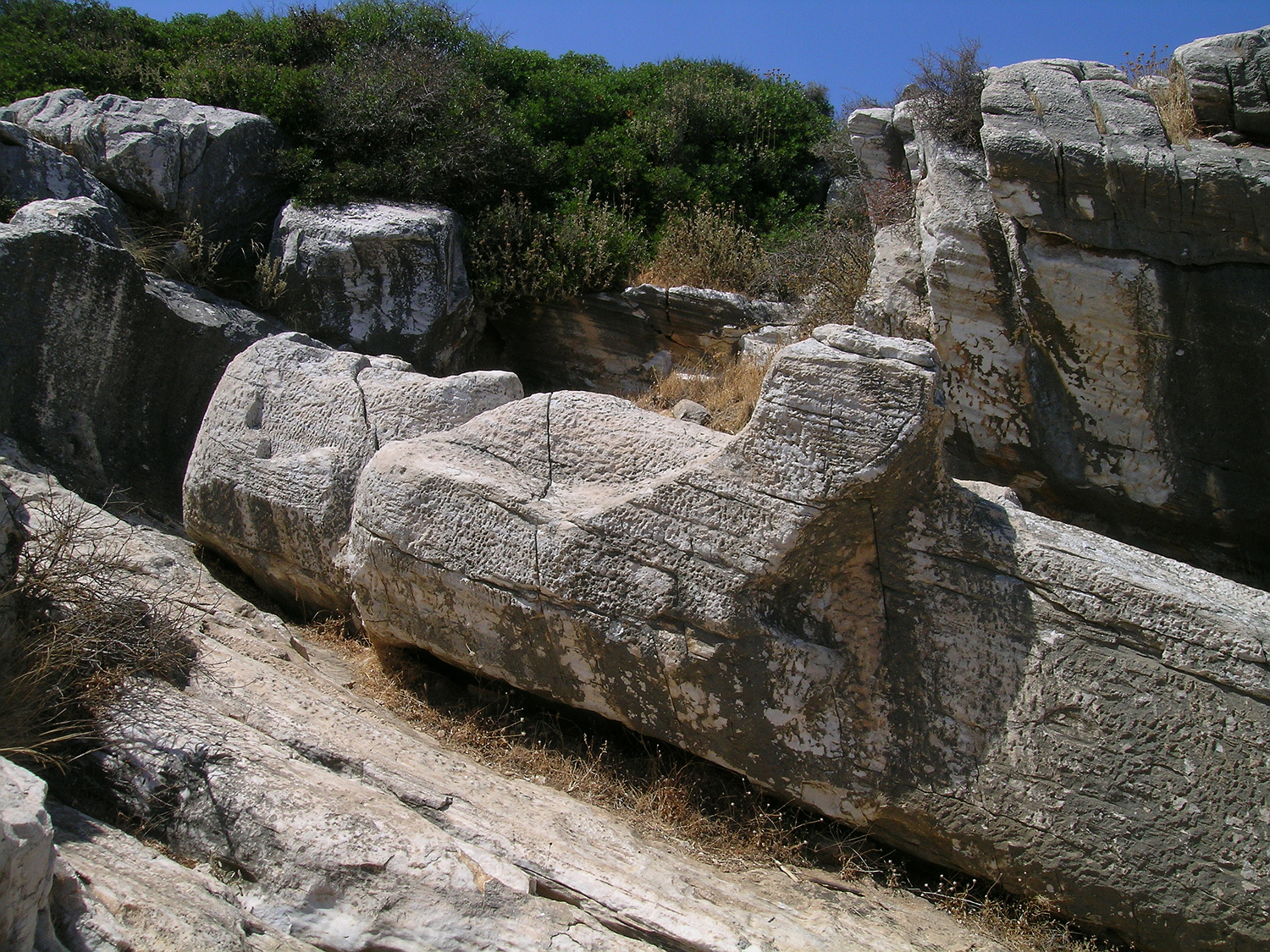
The Kouros is very similar in body posture to the early Egyptian sculptures.
Other important Naxian sculptures were also designed after Egyptian models, so the famous Lions on Delos and the Sphinx in Delphi. The similarity with Egyptian monuments is sometimes so great that one must assume that the Naxian sculptors had travelled personally to Egypt and seen the originals with their own eyes.
The processing of the rock
To work the marble, the ancient sculptors used hammers and chisels of various shapes as well as drills and wedges, which were initially made of bronze and later also of iron. In the case of the Kouros the stone around the figure was gradually chiselled away with a hammer and chisel. A “trench” was cut into the rock at the back, large enough for the workers to sit in. The marble was removed in layers; the resulting horizontal grooves are still clearly recognisable. On the statue you can see the small hollows from chipping off small pieces of the stone with a hammer and chisel. After the rough preliminary work with larger chisels, smaller and smaller chisels were used to finish the statues (after they had been transported to the installation site) and finally the surface was polished with grinding stones (e.g. wood with emery sand pressed into it).
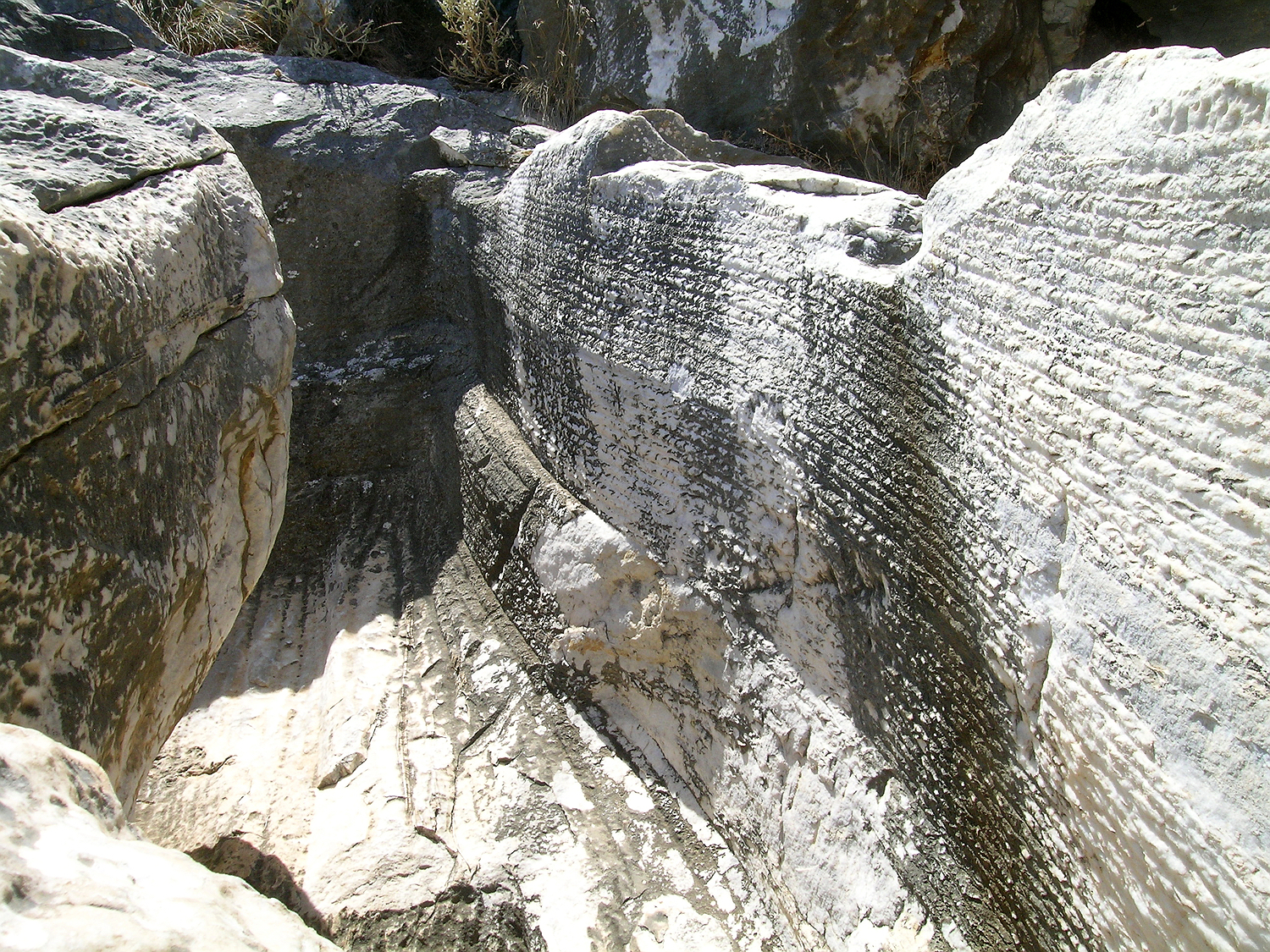
In the back of the statue, the rock was removed layer by layer, so that a small ditch was created. On its sides the grooves resulting from the chiseling can still be seen. Here you look in the direction of the head.

in the ditch behind the figure, looking towards the feet
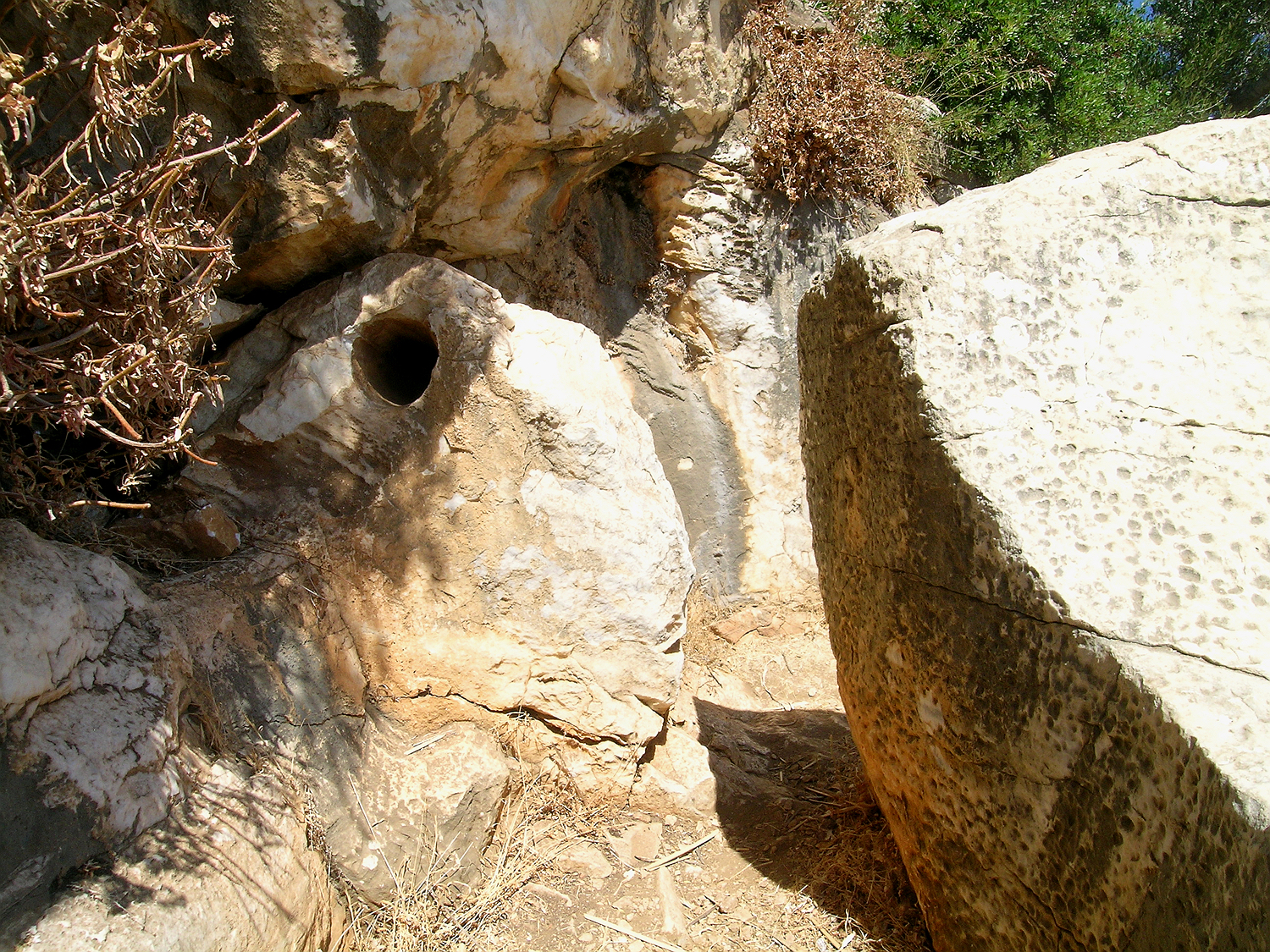
In the wall next to the feet a hole has been drilled, probably for some some purpose connected to the work.
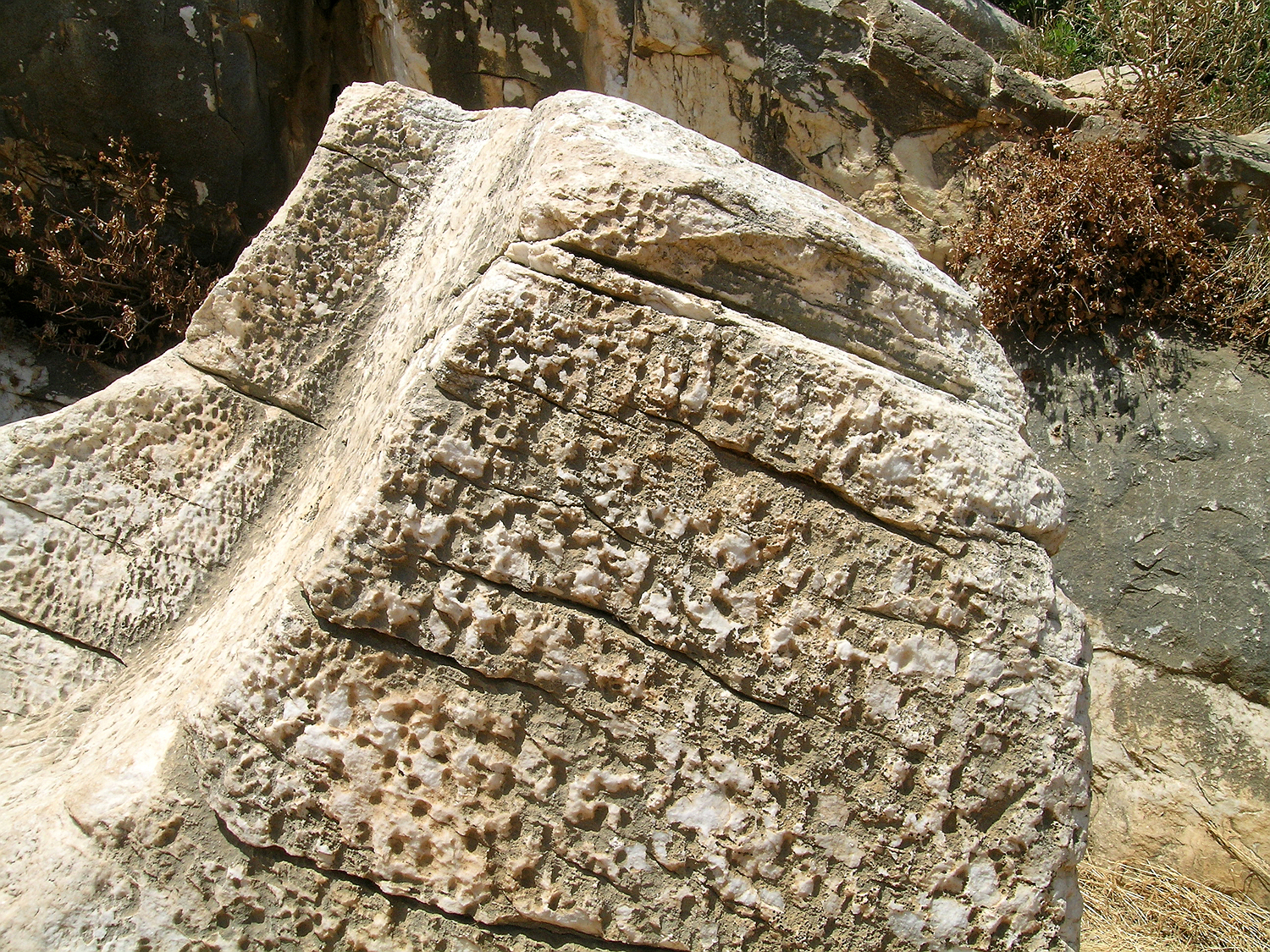
The surface of the statue is covered with marks that resulted from the chiseling of the marble.
The Kouros would certainly not have remained in Apóllonas, but was meant to be transported for example to the important sanctuary of Dionysus at Íria near the Chóra or to Délos to the Sanctuary of Apollo. The statues were carried to their destination by ship. First of course, they had to be transported to the port in Apóllonas, for which a smooth ramp must have existed right to the port by the sea. The large statues were probably pulled along the ramp with the help of oxen. Remains of an ancient mole are preserved in the harbor bay of Apóllonas.
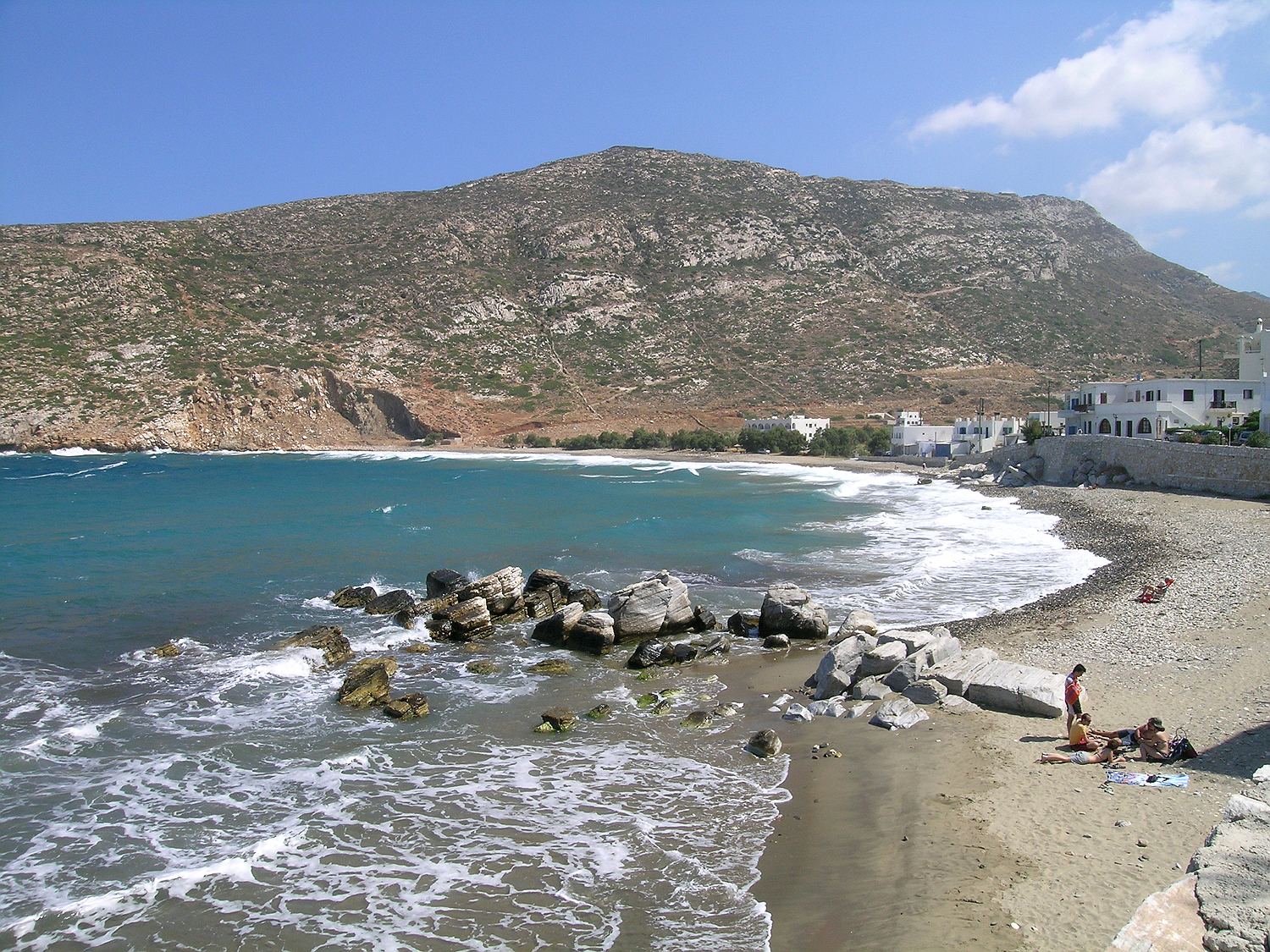
In the bay of Apóllonas near the harbor you can see the remains of the ancient pier.
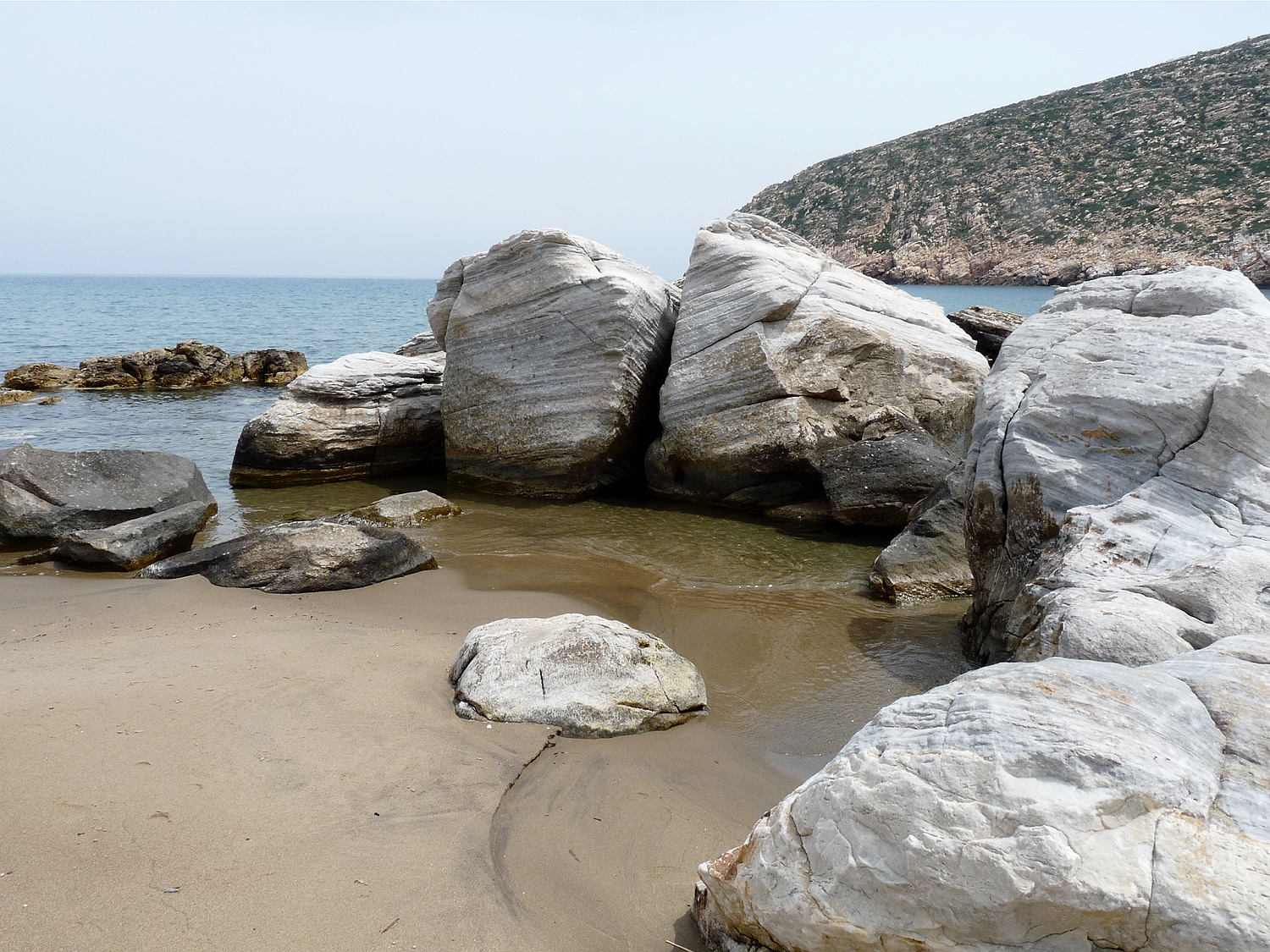
The ancient pier was made of large boulders.
Today it seems rather incredible that the ancient workers succeeded in loading the large statues onto ships without machines such as modern cranes. The largest statues or marble blocks were transported suspended between two ships in the water. From the port of arrival they then often had to travel long distances over land: Marble statues from Naxos were transported not only to the Acropolis in Athens but even to Delphi, which lies a good 600 m high in the mountains.
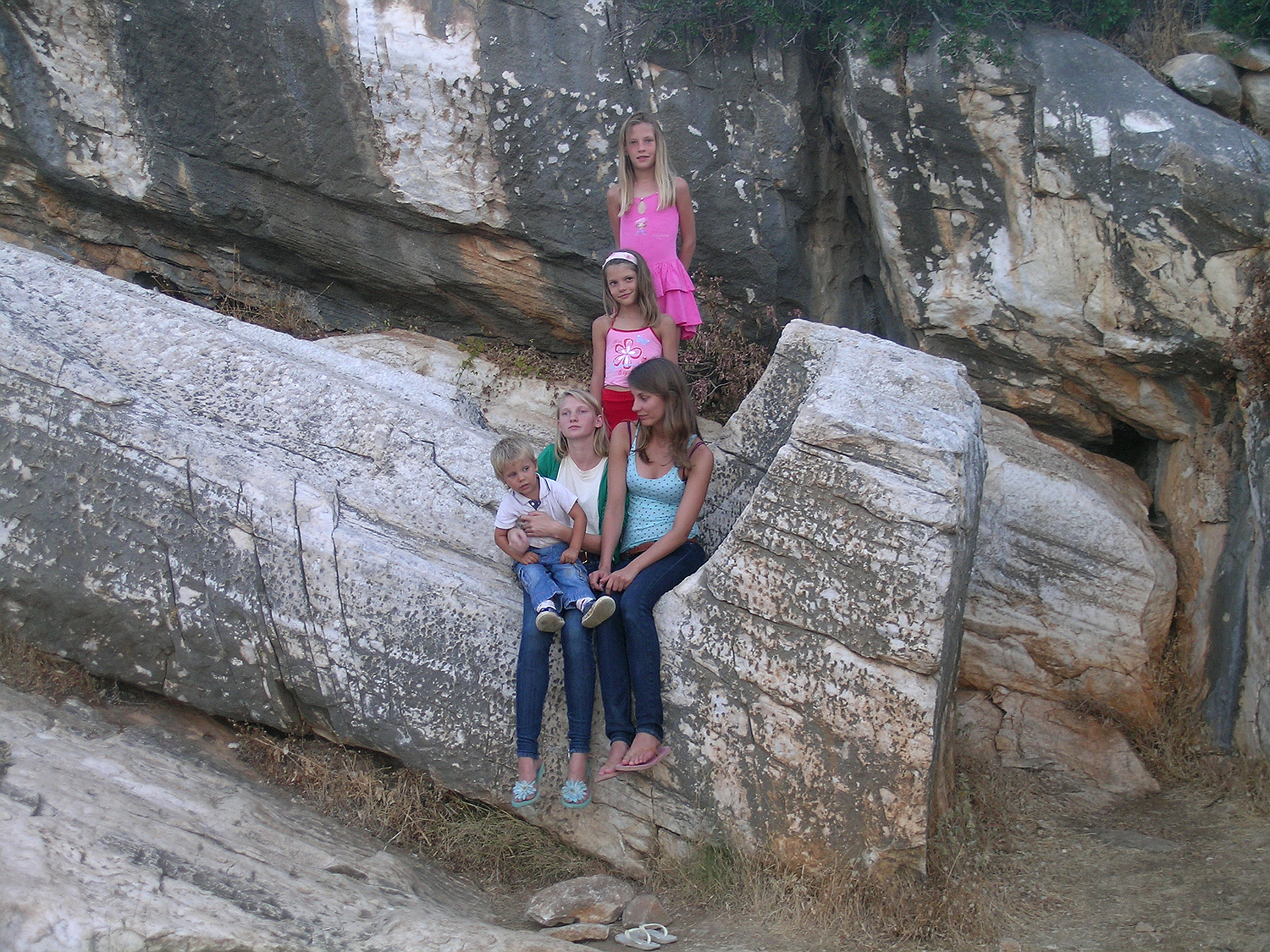
sitting on the Kouros’ feet…
continue: The ancient quarry at Apollonas
back: Quarries and statues
see also:
Comments are closed.